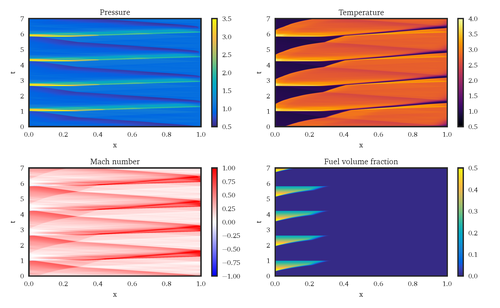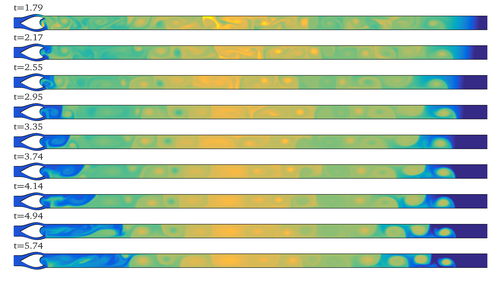CRC 1029 - TurbIn
Gas turbines provide about one fifth of the world wide power demand, with an upwards trend. Numerous efforts have been spent to achieve optimal efficiency. Still, only overall efficiencies of ca. 40% have been reached.
To cross this frontier is this project's goal. Its holistic view of the machine and the collaboration of numerous disciplines is what makes CRC 1029 stand out. The CRC is predominantly settled at Technische Universität Berlin.
One of our research interests is to replace the classical turbine's constant-pressure combustion with a more efficient constant-volume combustion. Contrary to a CI engine, a gas turbine has no contained combustion chamber; a different means to prevent the combusting gas from expansion must therefore be invoked. A dynamic approximation to this mode of operation can be achieved through detonative combustion. The strong pressure waves associated with detonations do however lead to short life spans and high maintenance efforts. An alternative is the controlled, homogeneous auto-ignition of the fuel.
At Free Universitity we are investigating the the theoretical requirements that enable this mode of operation. In particular, we are concerned with the Shockless Explosion Combustion (SEC), a novel operation mode for gas turbines.
To this end, we developed a reduced process model and a simulation. Our results are used in cooperation with Technical University Berlin to continuously update the requirements on suitable fuels and a planed demonstrator.
Our current focus lies on the transition from the Brayton cycle to a SEC in a live gas turbine as well as the dimensioning of a turbine plenum. Mathematically speaking, we are working on the development of a one-dimensional turbulence model and its embedding into a finite volume code, and the development of numerical schemes for the simulation and optimization of flows in complex geometries, especially cut-cell schemes, respectively.


